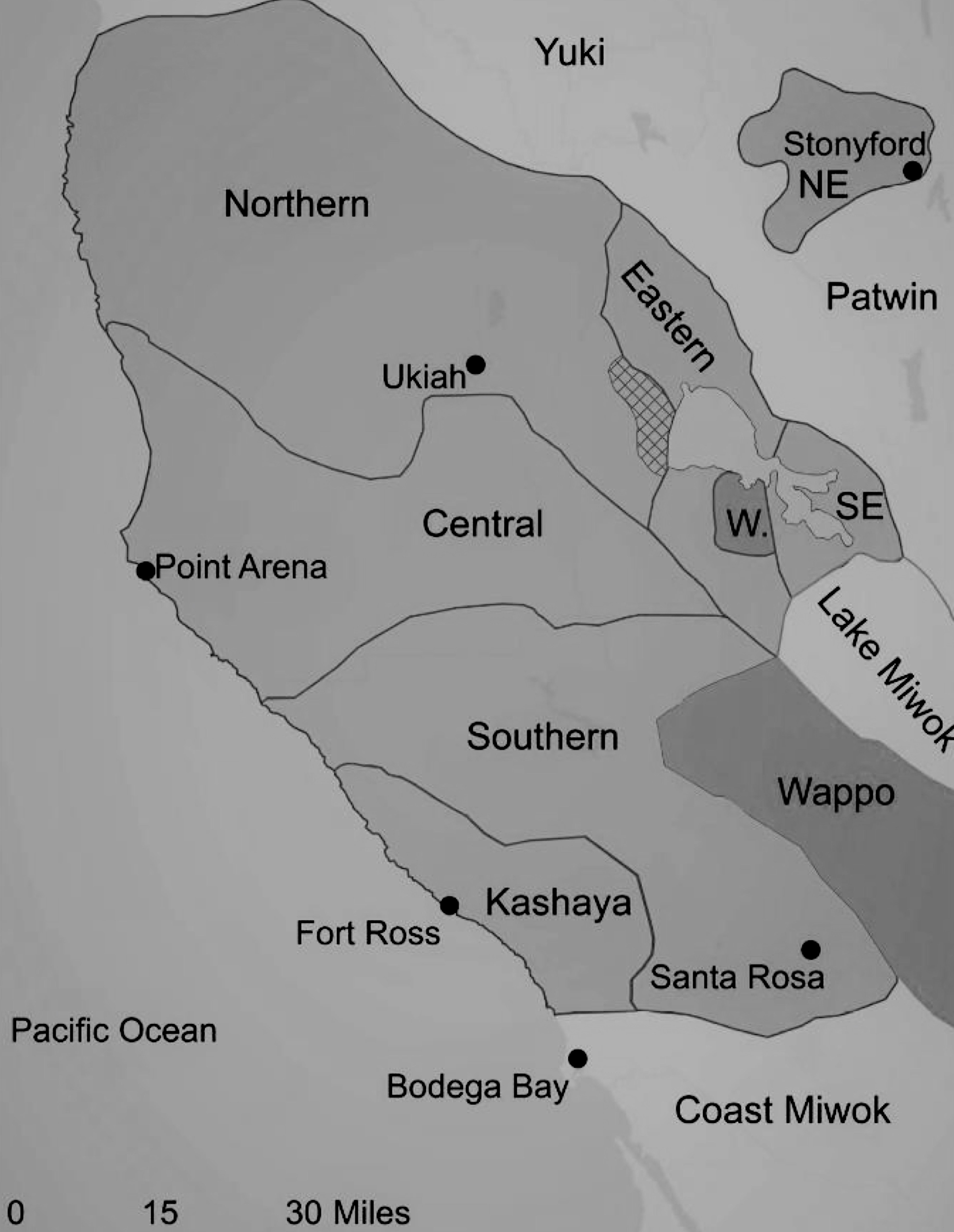Northern Pomo
The traditional Northern Pomo language area is from the Russian River northwest of Clear Lake to the Pacific coast. There were several subgroups, centering around settlements at Sherwood Valley, Outlet Creek in the Willits and Little Lake area, Redwood Valley, Potter Valley, and Coyote Valley (now flooded to form Lake Mendocino). In pre-contact times, the Pomoan languages together probably had around 8,000 speakers (Kroeber 1925). In 2001, there was only one known first-language speaker of Northern Pomo (Golla 2011). However, tribal members and language activists have been pursuing language revitalization and reclamation.

Northern Pomo is one of seven languages comprising the Pomoan language family; the others are Central Pomo, Eastern Pomo, Kashaya, Northeastern Pomo, Southern Pomo, and Southeastern Pomo. Together, the Pomoan languages form one branch of the hypothesized Hokan language family, the other members of which are Chimariko, Esselen, Karuk, the Palaihnihan languages (Achumawi and Atsugewi), Salinan, the Shastan languages (Konomihu, New River Shasta, Okwanuchu, and Shasta), Washo, Yana, and the Yuman languages (Cocopa, Kiliwa, Kumeyaay, Maricopa, Mojave, Pai, Paipai, and Quechan).
Selected archival materials at Berkeley
Selected materials in other archives
Further reading
- Barrett, S. A. 1908. The ethno-geography of the Pomo and neighboring Indians. University of California Publications in American Archaeology and Ethnology 6:1-322. [PDF]
- Golla, Victor. 2011. California Indian languages. Berkeley: University of California Press.
- O’Connor, Mary Catherine. 1992. Topics in Northern Pomo grammar. New York: Garland.
- O’Connor, Mary Catherine. 1987. Topics in Northern Pomo grammar. Ph.D. dissertation, University of California, Berkeley. [PDF]